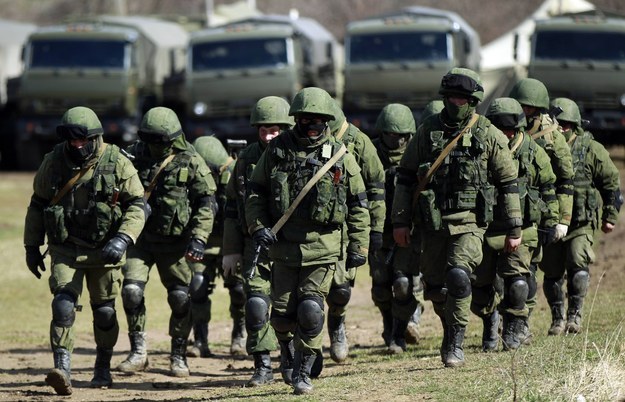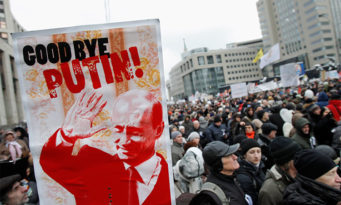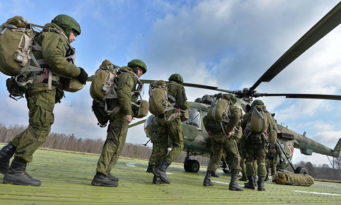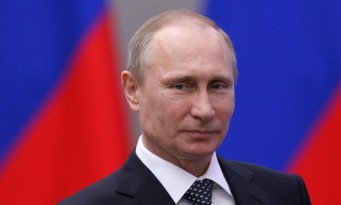After Ukraine: NATO should build up its sub-conventional deterrent

- By defencematters
The security permissive environment of the 1990s is no longer a tangible variable in today’s Europe.A discussion with Jim Thomas, the vicepresident of CSBA
by Octavian Manea
The security permissive environment of the 1990s is no longer a tangible variable in today’s Europe. It is in this context that NATO should revise how it can project its power in a contested Eastern Flank. At the same time, the Alliance needs to seriously invest in its sub-conventional deterrence posture. In order to discourage the so-called hybrid ambiguous aggression the NATO frontline states may consider developing national resistance movements and guerilla forces armed with precision guided munitions that can pose a very messy threat to potential belligerents. A discussion with Jim Thomas, the vicepresident of CSBA
How would you expect the US forward presence to evolve in this rapidly changing operational environment, one that favors increasingly the denial forces?
When we talk about forward-presence we tend to become intellectually lazy. If you think what the word presence means it means visible. That is the message that we wanted to send historically. I am not sure that this is going to be the same in the future. US has certainly has an interest in staying forward because there are real limitations to things like offshore balancing. We want to maintain strong commitments to our forward frontline allies in Asia, in the Middle East and Europe. But how we do that may really differ in the future.
Overall we need to be able to do two things simultaneously: having a more continuous deployment or stationing pattern in the frontline states maybe with more ground based capabilities and in particular air-ground integration capabilities; plus air and naval forces that can fight from range. We are unlikely to have the luxury of the relatively permissive operating environments we’ve experienced in recent decades.
What are the implications for the frontline states located in the proximity of regional A2/AD powers that also have a revisionist agenda?
First of all we have to have much greater expectations for what our allies will do to optimize their own local defences. Here they can follow the Chinese model by developing their own anti-access/area denial capabilities both for air-denial which would deny an adversary the ability to gain air cover for its ground forces, or it can conduct land-denial in terms of precision anti-armor systems or sea-denial in terms of anti-ship cruise missiles, mines and submarines.
Another element is related to what the allied frontline states can do to provide to US greater sanctuary within their countries. We need bases, facilities to operate from and in a crisis or conflict we need to be able to flow forces in to what is going to be probably a denied or at least a contested operating area.
The third element is the ability to hold-out the prospect of a protracted conflict to any adversary. This may take the form of an irregular resistance, a high-tech people’s army that could sustain a resistance and counter an occupation armed with PGMs that could really bloody an invasion force.
The outcome of the last year NATO summit in Wales was very much focused on power projection. The problem is that NATO assumes a highly permissive environment. How appropriate do you see this traditionalist power projection model compared with what Russia is fielding?
This debate matters a lot for the US. Since WW2 the US military has really seen itself as the world premiere expeditionary force. When there is a crisis we react and flow-in forces across oceans to the theaters were we conduct operations. All the trends we’ve been talking about suggest that there are real limitations with that expeditionary model in the future not only for the US but also for its allies. Regional actors are pursuing anti-access and area denial capabilities to prevent U.S. expeditionary forces from being able to defend America’s regional allies and partners effectively.
Everyone who has been in the power projection business now faces the same problem, which is that in a crisis dispatching expeditionary forces may be highly destabilizing and in a conflict it may be simply impossible because those forces would not have protected ports and airfields they could flow into. For these reasons, I am skeptical of the whole idea of a super-rapid reaction force because it fails to understand the changing military competition and the security environment. To meet these challenges there is no substitute for forward-based forces. The force will either be there before the crisis and conflict or I have doubts if it will ever get there.
The expeditionary component that NATO embraced at the last summit seems to be the reflection of an outdated defense mindset. It is still a defense in-depth oriented posture, one that assumes enough time to react. Should NATO find new ways of “doing business” and reassuring its Eastern Flank?
In Europe and NATO circles, Ukraine should have been a wake-up call for everyone but some people are still hitting the snooze button. Even after Ukraine, it is hard for me to understand how people are still talking about 2% of GDP as being adequate for defense. It is hard for me to understand how some people are still talking about smart defense or rapid reaction forces and the consolidation of headquarters. The mindset is still stuck in a 1990s Brussels discotheque. We now have to not only re-conceptualize our doctrine and operational concepts as we did with the follow-on forces attack (a complement to the American Air Land battle) during the Carter Administration. As US is seeking new joint operational concepts we should ask what are the allied equivalent to them. I think we need to emphasize deterrence at three levels:
· we have to maintain a robust nuclear deterrent because we still face many uncertainties in the future granted that are many scenarios where is hard to see the relevance of nuclear deterrence. But there were also many people that didn’t see the relevance of the NATO Alliance a few years ago. My fears is that if we remove the nuclear weapons from Europe we will never put them back again so it is better to maintain that level of deterrence.
· the second is the conventional level and here we need to do two things for the US and the most Western allies like the UK and France. We need to think how we can project power into the denied areas to come to the rescue of the frontline allies. We need to think about how we can conduct conventional strikes but also how we are going to have a greater forward basing posture than what we had in the past. For this reason we need to rethink the three No’s. It was this deal that we struck with Mephistopheles which makes no sense in the current era. The last part of the conventional equation is that we need to think what our frontline states need to do. They need to develop their own A2/AD networks.
· the third is that we need to think more about sub-conventional deterrence. As we face ambiguous hybrid threats we need to think how we can counter them with border control and internal defences, but we also need to think how we can pose similar challenges to others. How can we develop national resistance movements and guerilla forces of our own armed with PGMs that can pose a very messy threat to potential belligerents? Precision weapons have the potential to revolutionize the irregular warfare.
The major vulnerability that NATO faces today is one of sub-conventional ambiguous aggression. This implies thinking about how NATO will build up its sub-conventional deterrent, but arming them with a couple of things: on one side, we need precision-guided artillery, mortars and missiles in the frontline areas; second is the sensor net that such forces need to have with aerial, space, terrestrial layers. So the question becomes how can we create that sensor grid across borders that can provide early warning and targeting information for highly distributed, highly irregular ground guerilla forces?
The seizure of Crimea is transforming the Black Sea region. There are already signs that the Black Sea is entering in the age of a keep-out zone. How should NATO and the NATO littoral states think about this emerging threat to the regional commons?
Geographically you can almost think to Crimea as being analogous to Taiwan, the salient peninsula that allows the Russians to extend the range of their systems. This is an area that traditionally has been subjected to Russian naval dominance. But I take the point that we are going to see a redetermination on the part of Russia to master the Black Sea. One point for all of the frontline allies in Europe is to think about reducing their reliance on energy resources that either flow from Russia or that Russia can cut. With respect to the sea denial capabilities I think that these should be land-based. It doesn’t make sense to contest Russian naval dominance in a Mahanian way so it has to be approached asymmetrically by investing in land based sea denial capabilities (anti-ship cruise missiles, mines) and maybe in some smaller submarines.
Jim Thomas is Vice President and Director of Studies at the Center for Strategic and Budgetary Assessments. He served for thirteen years in a variety of policy, planning and resource analysis posts in the Department of Defense, culminating in his dual appointment as Deputy Assistant Secretary of Defense for Resources and Plans and Acting Deputy Assistant Secretary of Defense for Strategy.
The above are selections from a larger interview to be published in Small Wars Journal.

















